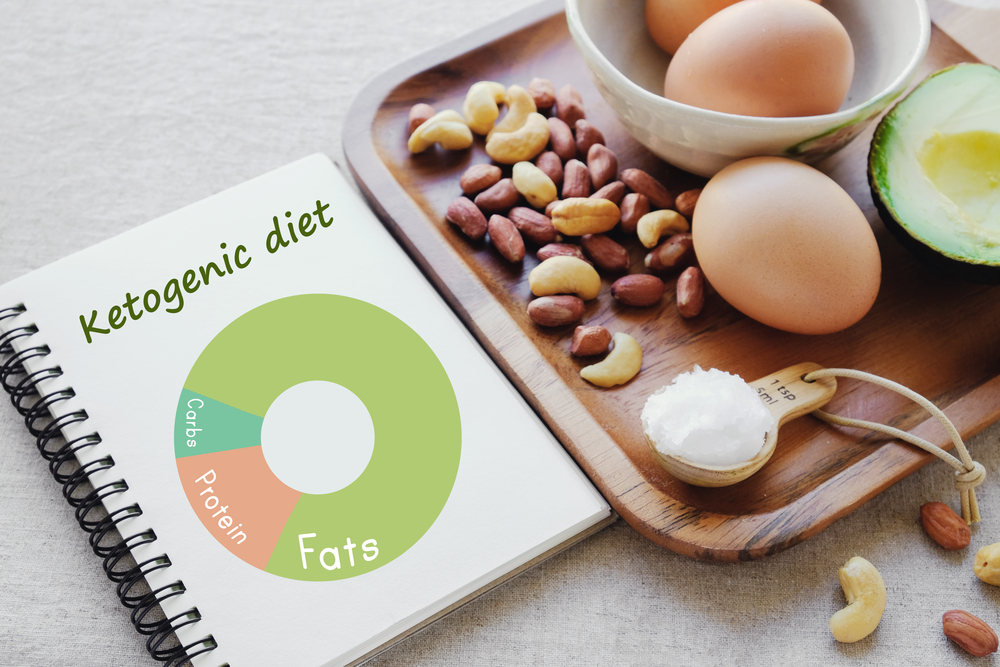In recent years, the Ketogenic diet has gained a lot of interest for its positive effects across a variety of conditions. The Ketogenic diet was first used as a treatment for epilepsy in the 1920s. Over the past two decades, there has been a burst in research and in the use of the Ketogenic diet for many conditions.
There is supportive evidence from research studies that the Ketogenic diet can offer symptom relief, and also protect the nerves in neurodegenerative conditions like Parkinson’s disease.
What Is the Ketogenic Diet?
The Ketogenic diet uses fat as the largest nutritional component of the diet. High amounts of fat will break down into ketones in the bloodstream, and your body will then be able to use ketones as a fuel source. Limiting carbohydrates and sugar intake will minimize the glucose in the blood, leaving cells with no choice but to use ketones as fuel. However, there is one crucial element to the ketogenic diet that is often missed.
What is imperative about the ketogenic diet is that the purpose is to produce ketones. When anyone implements the ketogenic diet, blood ketone levels must be checked to ensure the body is in ketosis. If blood ketones are not measured, the full benefit of the ketogenic diet may not occur.
Ketogenic Diet Positively Impacts Parkinson’s Disease
Parkinson’s disease is a chronic disease that affects a part of the brain called the substantia nigra, the nerves, and the nervous system. Anything that can protect or add health to the brain, the nerves, and nervous system can benefit individuals diagnosed with Parkinson’s disease.
In a study of a small sample of Parkinson’s disease patients, there was a 43% improvement in the Unified Parkinson’s Disease rating scale following 1 month of implementing the ketogenic diet.

There are several ways the ketogenic diet can benefit Parkinson’s disease:
- Neuro-Protection
The ketogenic diet has largely been used to treat epilepsy. It has been recognized that there are strong neuroprotective effects with the diet.
Nerves are, in large part, made up of fat. When healthy fat intake increases immensely, the building blocks that the body needs to repair and protect the nerves are available to use.
Ketones themselves are also a part of the neuroprotection piece. Ketone bodies act on the nerve cells to protect them from degenerating. In animal models with Parkinson’s disease, the ketogenic diet improved motor function and increased nerve cell survival in the substantia nigra of mice exposed to neurotoxins.
- Anti-Oxidation
Glucose and the normal metabolism of glucose causes metabolic oxidation, or stress, on the cells. Ketones, however, have antioxidant activity and protect the body from oxidative damage.
Parkinson’s disease has a key factor, which is oxidative damage to the substantia nigra. This oxidative damage contributes to the degeneration of the nerves, which then leads to Parkinson’s symptoms. Since ketones themselves have antioxidant activity, they can help prevent continued oxidative damage to the brain and nerves.
- Improved Energy Production
Ketones provide an efficient energy source for neurons. Ketones have the ability to bypass a part of the metabolic pathway that leads to stress in energy production. Therefore, ketones are an efficient way to fuel the body without adding to the stress that normal glucose metabolism can induce.
Ketogenic Diet Plan for Parkinson’s
As a concept, the ketogenic diet applies a 3:1 ratio of fat to the protein with each meal. It also applies the maximum of 10g of net carbohydrates in a single day’s intake of food.
Healthy sources of Fat include:
- Grass-fed red meats
- Wild Caught fatty salmons
- Organic nuts and needs
- Organic Extra Virgin Olive Oil
- Organic Cold-pressed coconut oil
- Organic fatty dairy foods like cream cheese, creme fraiche and eggs
- Avocados
Carbohydrates
The key with the carbohydrates portion of the ketogenic diet plan for Parkinson’s is that there is a total daily allotment of 10 grams of net carb. This means that the total carbohydrate minus the total fiber cannot exceed 10 grams in a day.
Some good sources of carbohydrates that contain a lot of fiber include:
- Celery
- Green leafy vegetables
- Broccoli
- Avocado
- Brussel Sprouts
Sugar
Consuming sugar in the ketogenic diet is a big no-no. Taking in, even small amounts of sugar can push someone out of the ketogenic state very quickly. When implementing the ketogenic diet, be sure to avoid all sources of sugar.
Common sources of sugar:
- Cane sugar
- Honey
- Agave
- Syrups
- High Fructose Corn Syrup
- Candies and sweets
- Cakes, cookies, and baked goods
- Fruits
The Conclusion
The ketogenic diet can be used as a tool to help those with Parkinson’s disease. There have been studies that show there can be improvements in Parkinson’s disease symptoms when implementing this diet correctly. The ketogenic diet can benefit because it offers nerve protective, antioxidant, and improved energy production qualities to any individual.
Particularly with Parkinson’s disease, these benefits can offer a positive impact on the disease process and on quality of life.
This article is not intended to diagnose or treat any individual with Parkinson’s disease. This article was created for educational purposes only and is not a substitute for medical, psychological or any other sort of professional care. Please always contact your medical provider with any questions or concerns involved with treatment for hallucinations and Parkinson’s disease.
For any questions or information on how we can help with Parkinson’s disease, please reach out to The Parkinson’s Plan.
